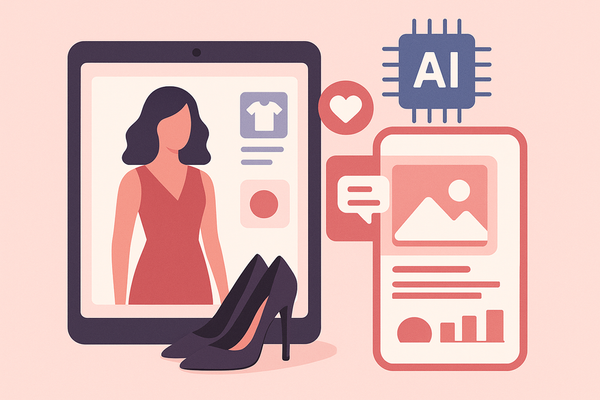Diversity Fashion Recommendations AI: How AI Is Powering Inclusive Style Suggestions
Explore how AI in diversity fashion recommendations is transforming style with inclusivity, overcoming bias, and pioneering future trends.

Estimated reading time: 5 minutes
Key Takeaways
- AI-driven fashion recommendations embrace diverse cultures, body types, and identity expressions.
- Technologies like machine learning, computer vision, and data analytics enable hyper-personalized style advice.
- Diverse training data and bias-mitigation strategies enhance inclusivity in AI models.
- AI-powered solutions reduce returns, improve customer loyalty, and expand market reach.
- Future trends include context-aware suggestions, synthetic data, and globalized fashion AI.
Table of Contents
- Introduction
- Understanding Diversity in Fashion
- The Evolution of Fashion Recommendations
- The Role of AI in Enhancing Fashion Recommendations
- Integrating Diversity in AI-Based Fashion Recommendations
- Benefits and Challenges
- Future Outlook
- Conclusion
- FAQ
Introduction
“Diversity fashion recommendations AI” refers to artificial intelligence systems designed to provide personalized fashion suggestions that actively account for diverse cultural backgrounds, body types, gender identities, and style preferences. In today’s fashion landscape, addressing bias and representation through inclusive AI-powered recommendations is a growing priority for global brands and consumers alike. This post will educate readers on how AI is transforming fashion recommendations to celebrate diversity across cultures, body types, and style preferences.
For those looking to explore in-depth, Maxx Report offers AI-powered reports that rate your looks and style inclusivity.
Understanding Diversity in Fashion
Diversity in the fashion industry means representations of different styles, cultures, ethnicities, body shapes and sizes, gender expressions, ages, and abilities. This broad view helps brands see everyone. Promoting diversity addresses inclusivity challenges such as size exclusivity, lack of representation for people with disabilities, and limited cultural variety, fostering body positivity and consumer loyalty.
Key resources:
The Evolution of Fashion Recommendations
Traditional vs. Modern Fashion Recommendations
- Traditional recommendations relied on static size charts, standardized fit models, and broad market demographics. Source: Fashion AI meets inclusivity
- Modern AI-driven suggestions leverage 3D body scans, customer reviews, and purchasing patterns for truly personalized, diversity-centered style advice. Source: AI powering inclusive fashion
Limitations of Standard Systems
- Perpetuate biases when trained on non-diverse data. Source: Importance of diversity in fashion AI
- Exclude many body types or mobility needs. Source: AI powering inclusive fashion
- Lack cultural nuance, alienating non-mainstream groups. Source: Fashion AI meets inclusivity
The Role of AI in Enhancing Fashion Recommendations
Key AI technologies transform recommendations:
- Machine Learning – Analyzes body measurements, past purchases, and style preferences for custom outfit picks. Source: AI powering inclusive fashion
- Computer Vision – Builds digital avatars and virtual try-on tools that fit every shape and size. Source: AI powering inclusive fashion
- Data Analytics – Extracts trends from social media and reviews to capture emerging cultural styles and underserved groups. Sources: Fashion AI meets inclusivity, AI and fashion duo: how intelligent tech is revolutionizing shopping experience
Applications such as AI outfit generator tool further illustrate personalized styling in action.
Integrating Diversity in AI-Based Fashion Recommendations
Strategy 1: Diverse Training Datasets
- Ingest images and customer profiles across a wide spectrum of shapes, sizes, ethnicities, and cultural expressions. Source: Importance of diversity in fashion AI
Strategy 2: Bias Mitigation Techniques
- Implement fairness algorithms (re-weighting, adversarial debiasing) to ensure underrepresented groups surface in suggestions. Source: Importance of diversity in fashion AI
Real-World Case Studies
- AI-powered Smart Fit – Uses real-world 3D body scans to recommend sizes instead of generic charts. Source: AI powering inclusive fashion
- Virtual Try-On Platforms – Offers realistic avatars for users of all backgrounds and abilities. Sources: AI powering inclusive fashion, Fashion AI meets inclusivity
- Culturally-Rich Apparel Design – Generates region- and culture-specific styles based on diverse user data. Source: Fashion AI meets inclusivity
For related insights on AI-driven inclusive beauty solutions, see AI inclusive beauty advisor.
Benefits and Challenges
Benefits of Diversity Fashion Recommendations AI
- Highly personalized and inclusive shopping experiences. Source: AI powering inclusive fashion
- Reduced return rates and waste due to better fit. Source: AI powering inclusive fashion
- Broader market reach and increased brand loyalty. Source: Fashion AI meets inclusivity
Challenges to Address
- Data Bias – Non-diverse training sets risk perpetuating exclusion. Source: Importance of diversity in fashion AI
- Privacy Concerns – Secure handling of sensitive customer measurements and personal data is crucial.
- Authenticity – Avoid performative inclusion by grounding recommendations in real community engagement. Source: Importance of diversity in fashion AI
Eco-conscious brands can also explore sustainable fashion recommendations AI tools.
Future Outlook
Trend 1: Context-Aware AI Recommendations
Integrate real-time data (weather, location, events) for hyper-relevant style picks. Source: AI and fashion duo: how intelligent tech is revolutionizing shopping experience
Trend 2: Synthetic Data Generation
Use AI to create training samples for rare body types, ages, or cultural features. Source: AI and fashion duo: how intelligent tech is revolutionizing shopping experience
Trend 3: Globalized Fashion AI
Recognize and serve styles from diverse geographies and subcultures. Sources: AI powering inclusive fashion, Fashion AI meets inclusivity
Suggested Improvements
- Greater transparency in AI decision-making
- Continuous bias audits and validation
- Collaboration with diverse communities for real representation
- Regulatory frameworks to ensure inclusive AI standards. Source: Importance of diversity in fashion AI
Conclusion
AI is fundamentally changing fashion recommendations by making them more diverse, personalized, and inclusive, breaking historic biases. Consider how these AI-driven shifts in inclusivity impact both industry practices and your own shopping experience—advocate for authentic representation in fashion.
FAQ
What is diversity fashion recommendations AI?
Diversity fashion recommendations AI refers to systems that use advanced algorithms to provide style suggestions mindful of different cultures, body types, gender expressions, and personal preferences.
How do brands implement inclusive AI recommendations?
Brands combine diverse training datasets, fairness algorithms, and community feedback loops to ensure their AI models surface inclusive, unbiased style suggestions.
What are the benefits of AI-driven inclusive fashion?
These systems reduce returns, enhance customer satisfaction, expand market reach, and foster brand loyalty by delivering personalized, representative styling options.
What challenges must be addressed?
Key challenges include data bias, privacy concerns, and the risk of performative inclusion without genuine community engagement.
What does the future hold?
Expect context-aware recommendations, synthetic data for rare demographics, and truly globalized AI that honors diverse subcultures.





